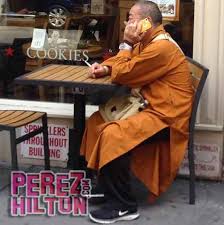 Six ways to tell whether a monk is real or fake
Six ways to tell whether a monk is real or fake
1. In general, monks from real temples do not solicit money on the streets (though a Mahayana monk may solicit donations to cover the costs of his travel).
2. Anyone holding a monk’s bowl to solicit money on the streets is fake, as the bowl is only for food in Buddhism.
3. Anyone who hustles on the street selling amulets and other fortunetelling products such as paper medallions or bead bracelets is fake.
4. Buddhist rules forbid monks from engaging in geomancy, face or palm reading, or any activities related to feng shui.
5. Real monks do not act aggressively, and would happily offer blessings without asking for anything in return.
6. Genuine monks will be willing to answer questions about which temple they belong to and Buddhism in general (such as about the Five Precepts), and recite Buddhist incantations.
No comments:
Post a Comment